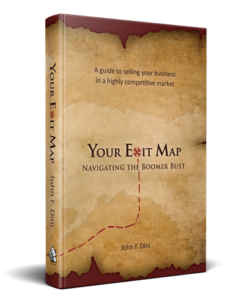Many of the upcoming buyer generations can’t or won’t run Baby Boomer businesses. This is (or should be) of concern to sellers everywhere.
“The children now love luxury; they have bad manners, contempt for authority; they show disrespect for elders and love chatter in place of exercise. Children are now tyrants, not the servants of their households.” Attributed to Socrates by Plato.
Elders have been complaining about their offspring for 2,500 years. The complaints change only in the activity bemoaned. “Chatter in place of exercise” is replaced by those damn radios, or automobiles, or television, or rock’n’roll, or cell phones or texting. It’s amazing when you realize that we’ve somehow managed to thrive through eons of generational deterioration.
The Buyer Generations
 But one thing is true. Generation X and the Millennials are not attracted, as a group, to many of the businesses run by Baby Boomers. We’ve discussed the macroeconomic trends, demographics, sociographics and psychographics, at length in this column and in my latest book Your ExitMap: Navigating the Boomer Bust.
But one thing is true. Generation X and the Millennials are not attracted, as a group, to many of the businesses run by Baby Boomers. We’ve discussed the macroeconomic trends, demographics, sociographics and psychographics, at length in this column and in my latest book Your ExitMap: Navigating the Boomer Bust.
For the next few columns, we’ll talk about other forces that deplete the number of available and interested buyers, and what you as a seller can do about them. Note that I said “deplete” the number. An attendee at one of my presentations a few weeks ago raised his hand during Q&A and said “There will always be someone willing to buy a profitable business.”
That is probably true, but in any competitive sales situation the challenge is to find and attract a qualified buyer. Most of us do that by targeting our offerings to the buyers we seek, then making certain they are aware of what we are selling. The buyers we seek are those who are willing and able to pay the price we ask. In other words, we play the odds. What we are discussing here is finding willing buyers who are able to pay your asking price.
Regulatory Obstacles
One issue in selling your business is the regulatory environment. Since the 1970’s, Americans have come to accept that basic business qualifications should be legislated. Some 30% of all products and services now require some form of government permission (licenses or certifications) to operate.
When the owner of a business is the sole qualified practitioner for its offerings, he or she has a problem. Selling the business requires either continuing to work in it personally until a new owner is legally qualified, or providing licensed employees with some insurance for the new owner of their retention. (See our column on Stay Bonuses.)
This issue drives many owners’ decision to sell the business to qualified employees. You can include a few licensed practitioners in an ownership group, frequently combining them with non-licensed managers or executives who are more suited to running operations. With a few years of advance planning, an owner can exit with the sale price in hand on the day he or she gives up control.
To be blunt, if you are the only person legally capable of creating, presenting or approving the work of your company, you have a job more than a business. The first step in preparing a saleable enterprise is to make sure it can operate without you.
 Stay bonuses are so named (quite logically) because their purpose is to get key employees to stick around after a transfer of leadership. They can take a number of forms, but one of the most common is to escrow a portion of the sale proceeds for later payment if certain conditions are met.
Stay bonuses are so named (quite logically) because their purpose is to get key employees to stick around after a transfer of leadership. They can take a number of forms, but one of the most common is to escrow a portion of the sale proceeds for later payment if certain conditions are met.
 That approach helped the company grow with a balanced customer base. BVA has a presence in food testing laboratories, water and wastewater plants and the Texas oil fields, rather than the typical dominance of doctors and hospitals for their type of business.
That approach helped the company grow with a balanced customer base. BVA has a presence in food testing laboratories, water and wastewater plants and the Texas oil fields, rather than the typical dominance of doctors and hospitals for their type of business.